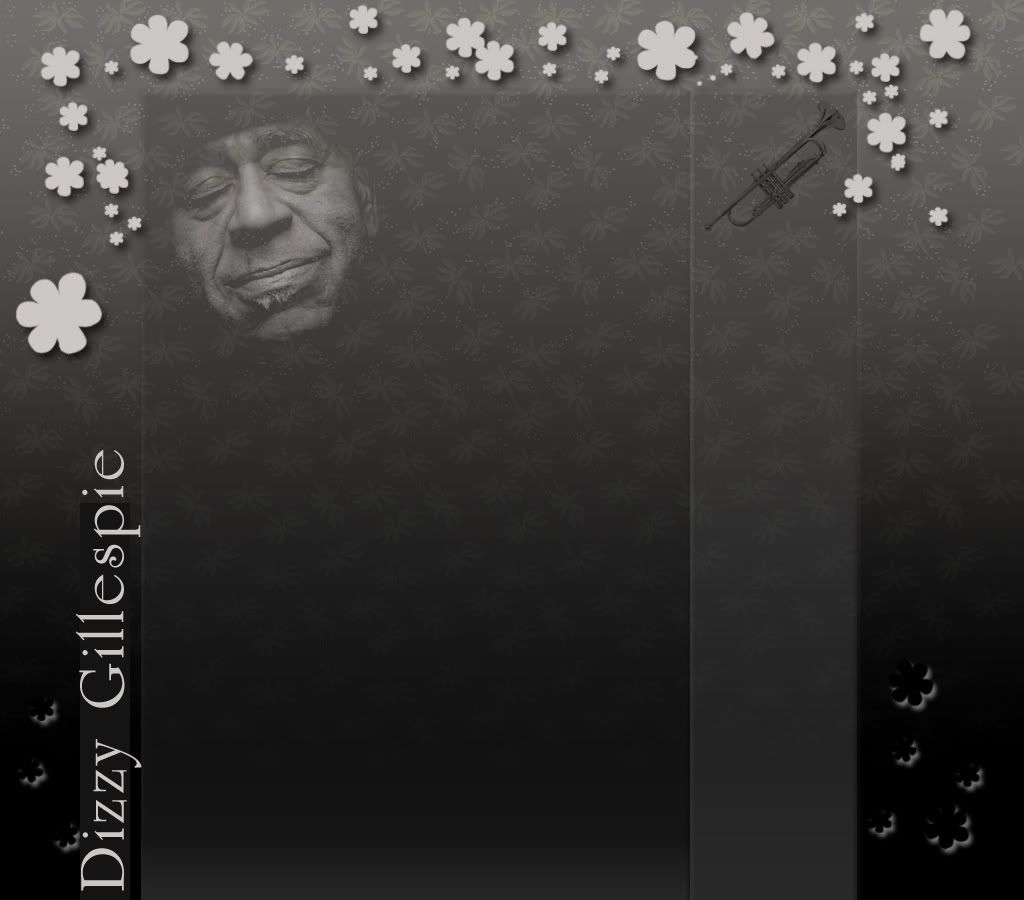"When Pee Wee Marquette finished announcing an attraction at Birdland, he usually walked off the bandstand leaving the microphone at the height he had adjusted it for himself, about three feet from the floor.
"One night, Pee Wee announced, ‘And now, ladies and gentlemen, Birdland proudly presents, Dizzy Gillespie!’ and walked away from the microphone. Out came Dizzy on his knees to accept the applause and announce the first tune. The microphone needed no adjustment." (Bill Crow, 1990)
"I wanted to play high and fast like Dizzy just to prove to myself that I could do it. A lot of cats used to be putting me down back in the bebop days because their ears could only pick up what Dizzy was doing. That’s what they thought playing the trumpet was all about. And when somebody like me came along, trying something different, he ran the risk of being put down." (Miles Davis, 1989)
"Gillespie was one of the few of the early beboppers who did not destroy himself. He ran his career with intelligence, and even when later movements in music seemed to make bop obsolete, he continued to work, emerging, in the 1970s, as something as close to an elder statesman as the music has ever seen. Like [Coleman] Hawkins, he kept his standards and continued to play his own way despite shifts of taste." (James Lincoln Collier, 1978)
One of Dizzy Gillespie’s distinctive trumpets, on which the bells were bent sharply upwards, was sold by a London auction house in 1996. Gillespie himself described how the unusual modification came about on the night of 6 January 1953:
"The truth is that the shape of my horn was an accident . . . When I got back to the club [Snookie’s, on 45th Street, New York], Stump ‘n’ Stumpy had been fooling around on the bandstand, and one had pushed the other, and he’d fallen back on to my horn. Instead of the horn just falling, the bell bent. When I got back, the bell was sticking up in the air. Illinois Jacquet had left. He said, ‘I’m not going to be here when that man comes back and sees his horn sticking up at that angle.’
"When I came back, it was my wife’s birthday and I didn’t want to be a drag. I put the horn to my mouth and started playing it. Well, when the bell went back, it made a smaller hole because of the dent . . . The sound had been changed and it could be played softly, very softly, not blarey . . . I contacted the Martin Company, and I had Lorraine, who’s also an artist, draw me a trumpet at a forty-five degree angle . . . They made me a trumpet and I’ve been playing one like that ever since." --The Cronicle of Jazz--

image Copyright by © Val Wilmer
Labels: Stories


